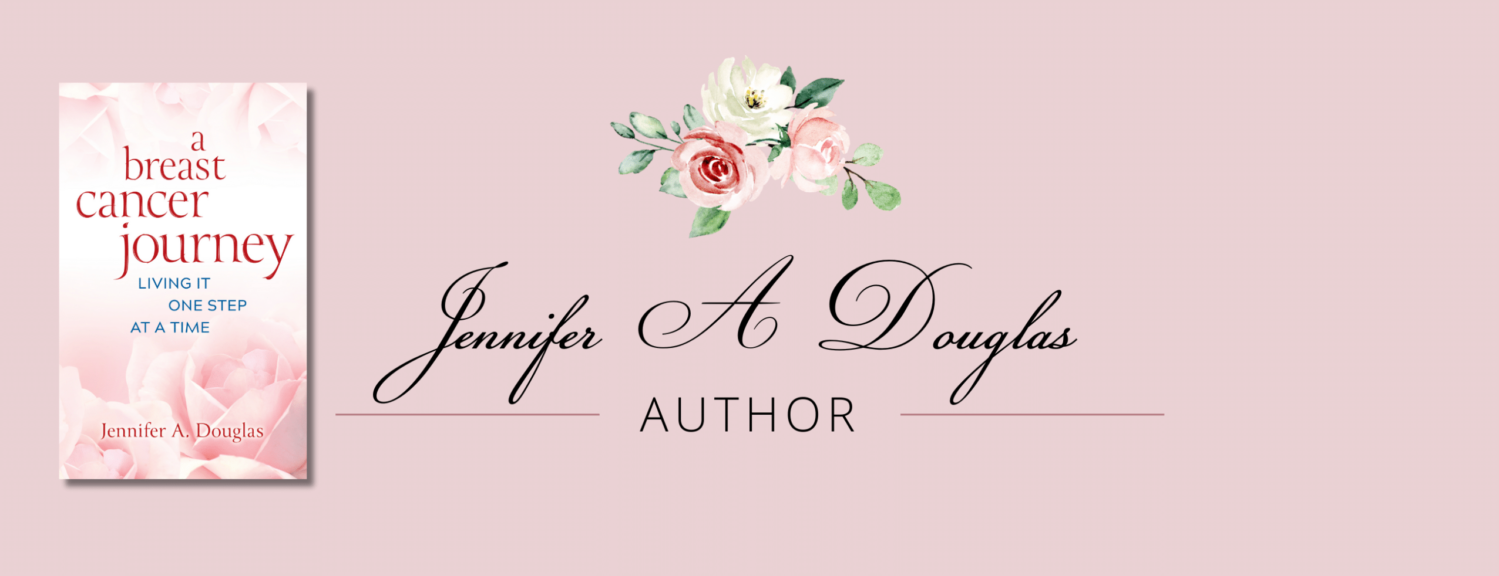
Breast Imaging Focus: What is a Screening Mammogram?
There are many different types of breast imaging that work together to help radiologists, surgeons, and oncologists detect changes in our breasts. In many cases, screening mammograms are a common type of imaging ordered as a part of our general medical care after 40. However, the age at which you start getting mammograms may differ according to many factors such as your personal history, your family history, your medical care team, or your country of residence.
Please Note: I am sharing my research and experiences as a patient. Please understand my disclaimer and always consult your medical team for your medical needs.
When Did I Start Getting Screening Mammograms?
In my case, I was referred to a radiology center to begin my screening mammograms at the age of 40. My primary care doctor put in the order for me when I had my physical. This wasn’t the first time I had been referred to a breast imaging center, but it was the first time I would be having a mammogram instead of a breast ultrasound.
In my thirties, my gynecologist noticed that I had small, round lumps in my breasts. So he referred me to an imaging center for a breast ultrasound to check on them. When I asked the center why I wasn’t having a mammogram, then mentioned that mammograms weren’t effective in younger women because they had denser breasts. So the radiologists used ultrasound to examine the findings for me instead of a mammogram.
I’ll discuss ultrasounds in a different post because this one is all about screening mammograms.
40 or 50? Finding Clarity Among the Confusing Messaging
When should we start getting mammograms? Is 40, 45, or 50 the right age? When we start, should we go every year, every other year, or every few years? The recommendations and messaging around annual mammograms have shifted in the last decade. It is no longer one size fits all for mammograms. So if there are so many different options, how are we supposed to sort out the right screening path for us?
Expressed in general terms, most agencies recommend a woman begin mammograms between the ages of 40-50 and get them done regularly. Depending on her country or her personal risk factors, that regularity might be annually or biannually. Once a woman reaches 75 or will likely not live another ten years, she can consider stopping mammograms. I’ll include some links at the bottom of this post that compare the various recommendations.
Why Can’t One Single Recipe Work for Everyone?
If this were a recipe for cookies, it would be confusing. Should I use one cup of sugar or two? Whole wheat flour or all-purpose? Chocolate chips or raisins?
As I began to explore mammogram recommendations more in-depth, I realized that I’m not the only one who is curious about these questions. The goal of screening mammograms is to catch breast cancer at an early stage so that it is more treatable. However, mammograms don’t detect all breast cancer. Some women develop cancer before they begin regular mammograms. In some cases, the cancer isn’t visible in a mammogram. Additionally, some cancers grow and spread rapidly in between routine imaging.
Every day people die from metastatic breast cancer. Annual mammograms aren’t the solution to preventing all metastatic breast cancer. Does this mean that the screenings should be abandoned? If the imaging doesn’t catch all cancer, is it worth it?
Creating a Personalized Recipe for Breast Imaging- Wisdom Study
There is a study going on in the United States exploring this very question, and you might be able to join and be part of finding the answers.
The Wisdom Study’s key question is, “Should we all get a mammogram every year, or should our screening be based on our personal risk factors?”
This study is open to women in the United States between the ages of 40-74 who have never had breast cancer or DCIS (so I’m sadly disqualified).
If you can participate, I would highly recommend you check it out. I am convinced that one screening recipe doesn’t work for everyone. But don’t take my word for it. Go and explore the research project for yourself. Research into why cancer develops in some people and not in others is critical to helping make progress for the future.
While We Wait for More Answers, What Should We Do?
What mammogram recipe is the best?
I recommend talking to your primary care doctor or OBGYN to discuss when you should start getting regular breast imaging. The American Society of Breast Surgeons and American College of Radiology recommend that all women begin regular screening mammograms at the age of 40. They have published numerous studies that document the statistical benefit of screening that starts at age 40 and is done annually.
In my case, I had a mammogram at 40 that was clear, and then a mammogram one year later that found my DCIS. I will never know whether this DCIS would have become invasive had I not started my mammograms at age 40. I’m thankful that it was found early so that it could be removed.
What Is It Like to Get a Screening Mammogram?
I’ve had a lot of mammograms over the past few years, so they have become a process that I’m quite familiar with. I remember being nervous about getting my first and not sure what to expect.
- Would it hurt?
- How long would it take?
- When would I get my results?
I’ll share my experiences with screening mammograms with you in this post. Then, I will go into more depth in another post about diagnostic mammograms. In simplest terms, a mammogram is an x-ray of the breast. The images can be recorded on film or digitally. Additionally, mammograms can be 2-D or 3-D. I won’t go into detail in this post about the differences, but I will include a link below that has more information on them.
Once my primary care doctor ordered my mammogram, I scheduled an appointment at an imaging center. My first two mammograms were done at this center, which also did other types of imaging.
The only preparation I needed to do was to make sure I wasn’t wearing any deodorant or lotions during the imaging. This is important because the aluminum in deodorants can show up on the mammogram as calcifications. These findings might be mistaken for something that needs follow-up. If you forget and show up to your mammogram with deodorant on, mention it, and the check-in team can provide you with some towelettes to remove it.
If you have recently received a Covid vaccine or plan to, inform the scheduling team. Your facility may have guidelines for when the optimal time is to schedule your mammogram. Covid vaccines can temporarily enlarge lymph nodes which would impact the findings on your mammogram.
Once I was called back for my mammogram, the technician led me to a dressing room. She showed me a locker to put my belongings in and handed me a gown. In some facilities, there is a second waiting area for mammogram patients that is more private than the main waiting room, and in others, the dressing room might be attached to the screening room. Before my screening, I undressed, put my clothes in the locker, and wiped any residual deodorant off.
The mammogram technician asked me several questions before getting started with the imaging. Some of those questions included when the first date of my last period was and if I had any children. After she was done with the questions, it was time for the screening to begin.
Screening Mammogram Procedure
We walked up to the machine, and she asked me to remove one arm from my gown to expose one breast. After asking my permission, she adjusted the height of the machine and placed my breast on the bottom mammogram plate. It was a bit awkward as I needed to move so that she could get as much of my breast tissue onto the screening area. Then she used a manual wheel to move the top part of the machine onto my breast.
Then the squishing began.
She asked me to hold my breath once she was ready for the screening to start. The machine made some beeping as it was doing its scans. The compression only lasted a few seconds, and then it automatically released once the scan was finished. In my case, I didn’t find it painful, but it was uncomfortable during the compression. I also found that the position of my arm and shoulder was awkward during the scanning.
Compression is essential in a mammogram because it spreads the breast tissue out and makes it easier for the radiologists to read the results. It’s important to hold still during the scan because movement can also impact the results.
After the horizontal scan was finished, the plates were rotated to allow for a secondary view of the breast. The following image taken was a vertical view of the breast. After that was completed, the technician repeated the scans on the other side.
These four views were uploaded to a radiologist who would read them and then send the results to my doctor and me.
After the imaging was complete, I could head back into the dressing room and change back into my clothes. I usually bring deodorant with me so that I can apply it as I’m getting dressed. If you feel sore over the next few days, consider taking an OTC pain pill to help out.
Receiving Results From Your Screening Mammogram
How long it takes to receive results can vary depending on your imaging center. When my mammograms were normal, I received a report in MyChart a few days later and a letter in the mail. However, when my mammogram needed follow-up, I received a phone call the next day.
On your report, you may see a Bi-Rads number assigned to your screening. These numbers are a standardized way that radiologists communicate the results and indicate the potential need for follow-up. I have a more detailed post on understanding results here.
Breast density is another piece of information that may be included in your results. Whether or not you automatically receive this information as a patient depends on where you live. Some states have laws that mandate this information be released to the patient. If you don’t see information on your breast density, I advise you to contact your doctor and ask about it. Mammograms are not as effective on people with dense breasts. Here is an article about breast density.
Also, if you’d like some good patient resources about breast density, please look at https://densebreast-info.org.
Keep Attending Screening Mammograms Regularly
Once you begin getting regular mammograms, radiologists can compare them from year to year and spot changes. In my case, my first mammogram was normal, but my second one had new calcifications. These calcifications were indications of DCIS.
If you’re over the age of 40, I highly recommend talking to your doctor about beginning regular mammograms.
If I had skipped my screenings, I don’t know at what stage my cancer would have been discovered. I don’t fit any of the classic risk factors for developing breast cancer, yet I did. So please, talk to your doctor and add regular breast imaging to your self-care list. I’m happy I did.
Resources
- Society for Breast Imaging: Why screen at 40
- American College of Radiology: Mammograms Save Lives Campaign
- Breast Cancer School for Patients
- Dense Breasts:
- https://densebreast-info.org
- https://connect.uclahealth.org/2021/10/20/do-you-have-dense-breasts-how-to-know-and-what-it-means-for-screening/
- https://www.mayoclinic.org/tests-procedures/mammogram/in-depth/dense-breast-tissue/art-20123968
- https://www.hopkinsmedicine.org/health/conditions-and-diseases/my-doctor-says-i-have-dense-breasts
- BiRads information
- Difference between screening and diagnostic mammograms:
- 2D or 3D mammograms
- Breast Screening in Europe:
- Research regarding screening recommendations
- US Preventive Services recommendations – Currently being updated https://www.uspreventiveservicestaskforce.org/uspstf/recommendation/breast-cancer-screening
- https://pubmed.ncbi.nlm.nih.gov/26757170/
- Article in rebuttal to United States Preventive Services Task Force Screening Mammography Recommendations: Science Ignored
- Screening at 40
- Wisdom Study : https://www.thewisdomstudy.org
Jennifer Douglas
Jennifer is the author of "A Breast Cancer Journey: Living it One Step at a Time," breast cancer survivor, and patient advocate. Her book, published in 2023 by Bold Story Press, is an encouraging guide for breast cancer patients. It contains first-hand information, organized by topics, to help readers navigate the diagnosis, treatment, and recovery from breast cancer. Her writing emphasizes emotional, mental, and physical well-being along with empowered decision-making.


You May Also Like

Do You Have Dense Breasts?
February 22, 2022
Eighteen-Month Imaging after my Lumpectomy: Bilateral Mammogram with a Surprise Ultrasound
June 27, 2021
